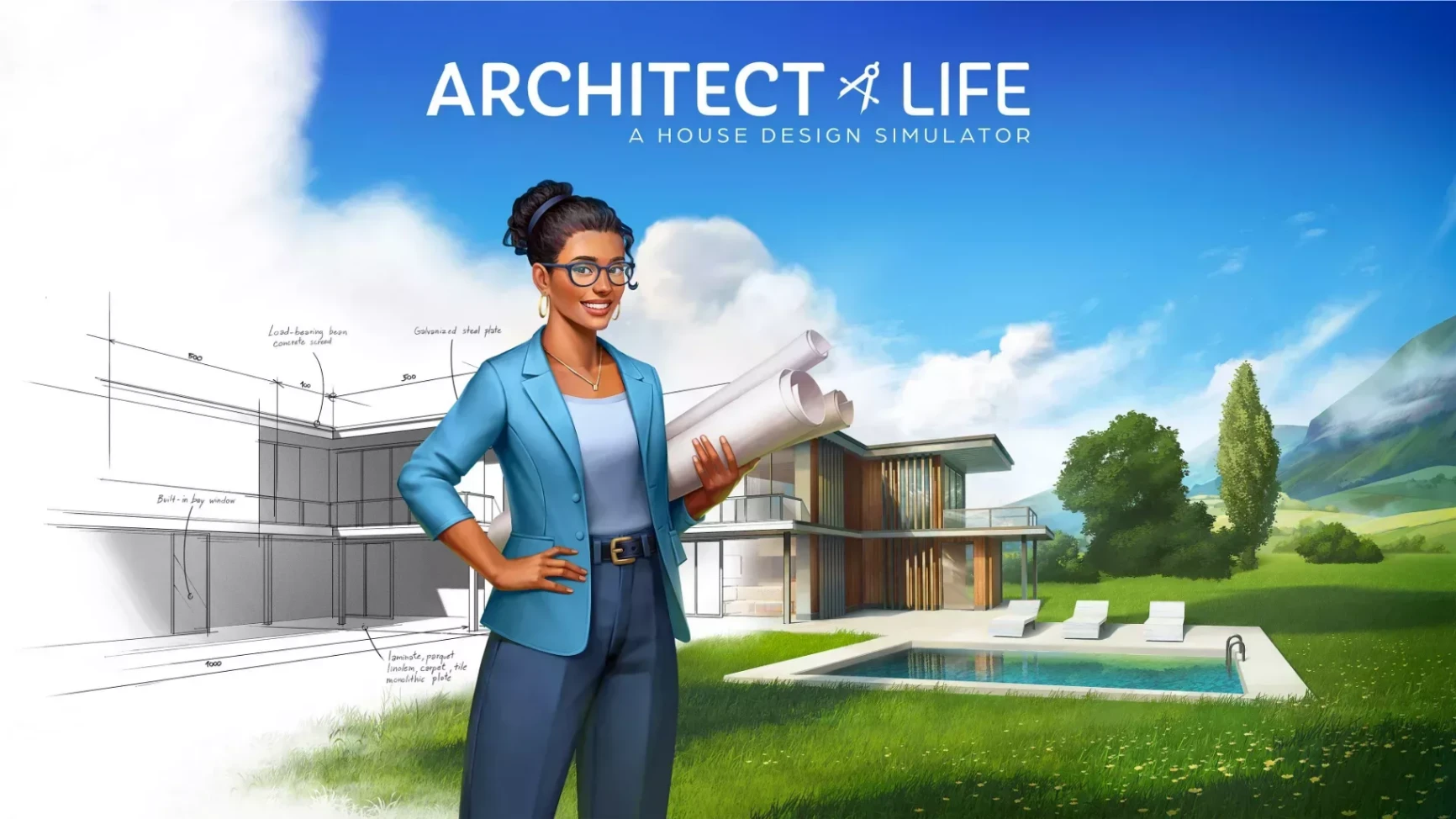Key Highlights
- Step into the world of architecture with Architect Life, a detailed house design simulator.
- Experience two main gameplay modes: a structured career mode and a free mode with unlimited resources.
- Unleash your imagination and design your dream homes from the ground up, enjoying immense creative freedom.
- Utilize a wide selection of materials, tools, and design options to bring your unique visions to life.
- The game is available on PC and console, with controls adapted for both platforms.
- While it has a strong foundation, some clunky controls and a limited decor catalog can be frustrating.
Introduction
Have you ever sketched out your dream house on a napkin or spent hours building digital homes in other games? If so, Architect Life: A House Design Simulator might be the perfect game for you. Developed by Shine Research and published by Nacon, this title invites you to put on an architect’s hard hat and turn empty lots into stunning residential masterpieces. It’s a game built for the creator in all of us, offering a deep and engaging experience in the world of architectural design.
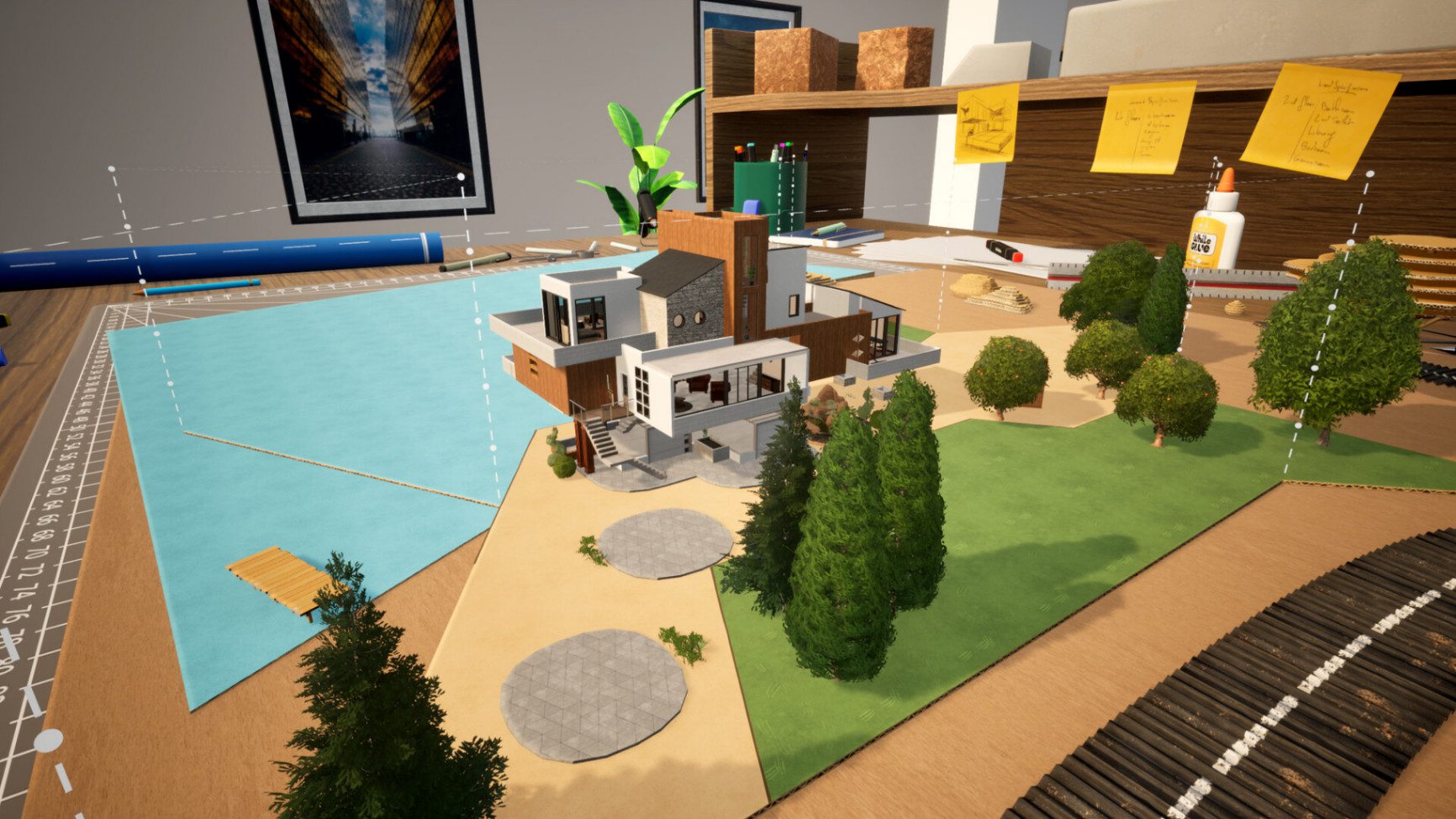
Exploring Architect Life: A House Design Simulator
At its core, Architect Life is a comprehensive house design simulator that puts you in charge of the entire home-building process. You aren’t just placing furniture; you’re laying foundations, erecting walls, planning electrical systems, and making crucial decisions that affect the entire project. The game aims to provide a realistic glimpse into an architect’s responsibilities.
This simulator empowers you with remarkable creative freedom. Whether you’re working for a demanding client in career mode or building a sprawling mansion in free mode, the game provides the tools to let your imagination run wild. Let’s explore the game’s concept and the unique features that make it stand out.
Game Concept and Realism
The game’s concept is refreshingly grounded. You play as an architect tasked with designing homes for various clients. This involves much more than just drawing a floor plan. You create a full 3D model, and while you don’t physically build it yourself, you oversee the construction process. This includes selecting subcontractors and managing unexpected events, like builder disputes or material shortages, adding a layer of project management to the house design process.
Architect Life leans heavily into realism, setting it apart from more arcade-style building games. It takes its role as a simulator seriously. You need to consider practical elements, from the foundational layout to structure extensions like balconies or mezzanines. Achieving a precise dimension for each room is crucial, and the game challenges you to think like a real architect, balancing aesthetics with functionality.
This focus on realism makes the game both challenging and rewarding. You learn to appreciate the complexities of home construction. The detailed approach ensures that every house you design feels like a genuine accomplishment, a structure that could theoretically exist in the real world. This makes it an engaging experience for anyone interested in the technical side of architecture.
Unique Features That Set It Apart
One of the most compelling unique features is the in-depth career mode. You don’t just take on random jobs; you create and grow your own architectural firm. Success depends on satisfying client needs, which in turn unlocks more complex and prestigious projects. This progression system gives you a tangible sense of accomplishment as your firm’s reputation grows.
The game also introduces new ways to experience the construction process. You’re not just a designer but also a supervisor. During the build, you’ll face chance events—like a sudden rainstorm delaying work—and you must decide how to handle them. Do you spend more money to stay on schedule or risk missing the deadline? These choices add an interesting strategic layer to the gameplay.
Here are some standout features:
- Innovative Construction Tools: Go beyond basic building with advanced tools for detailed design.
- Subcontractor Management: Choose the right teams for the job and supervise their work.
- Dynamic Events: React to unexpected challenges that can impact your budget and timeline.
- Skill Progression: Earn experience to take on more innovative and ambitious projects.
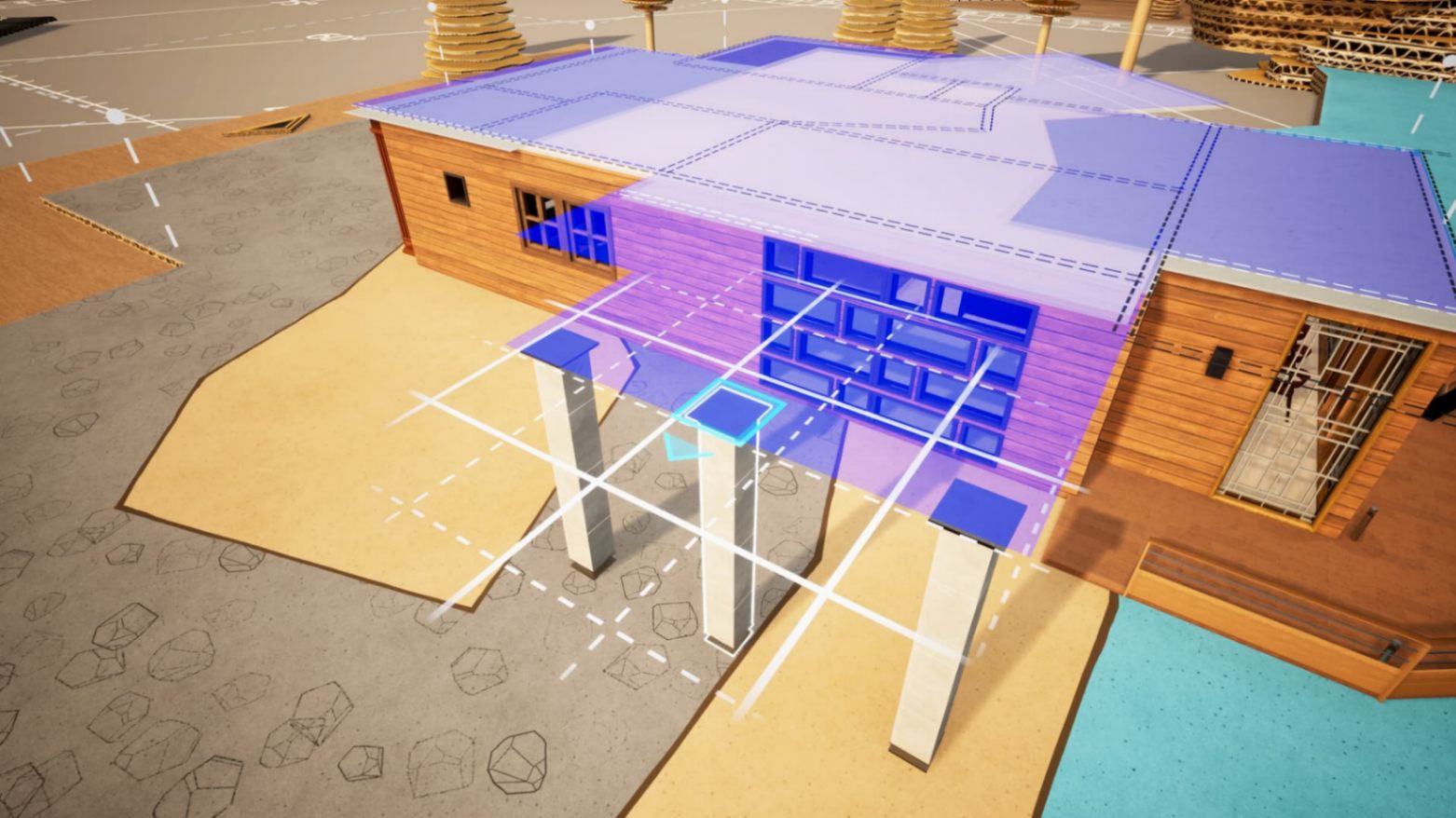
Gameplay Experience and Mechanics
The overall gameplay in Architect Life is a relaxing and immersive experience. If you’ve spent countless hours in games like The Sims, you will feel right at home with the core mechanics. The process of laying down foundations, raising walls, and seeing a structure come to life is incredibly satisfying. This simulator is designed to let you lose yourself in the creative process for hours on end.
You are given a suite of intuitive tools to craft everything from the basic shell to the intricate details of a home. While the game provides a solid framework, the experience can vary depending on the platform. The developers have clearly put effort into making the controls work on consoles, but some mechanical quirks can interrupt the creative flow. Now, let’s look closer at the building tools and the game’s progression system.
Building, Designing, and Creative Tools
The game equips you with a robust set of creative tools to bring your architectural visions to life. From the moment you start a project with your architectural firm, you have control over every detail. You’ll lay foundations, construct walls, and place doors and windows. The toolset is designed to feel familiar to fans of the genre, making it easy to jump in and start building.
Beyond the basics, you have to think about the home’s infrastructure. This includes planning where to place lighting fixtures and even how to manage room heating by strategically placing devices. The developers aimed to provide ergonomic tools that make these complex tasks feel manageable. As you complete projects, you gain experience points, unlocking even more advanced options and materials for future builds.
Here’s a glimpse of the tools at your disposal:
- Foundation and Wall Tools: Create any floor plan you can imagine.
- Roofing and Exterior Options: Design everything from simple roofs to complex, multi-level structures.
- Utility Placement: Plan for heating, lighting, and other essential services.
- Landscaping Features: Add vegetation, playgrounds, and create a beautiful outdoor space.
Challenges, Levels, and Progression
The career mode in Architect Life is structured around a series of engaging challenges. You’ll start with smaller, simpler projects and gradually work your way up to designing massive, high-budget homes for wealthy clients. Each contract comes with a specific set of requirements you must meet, testing your design skills and ability to manage a budget. This sense of progression keeps the gameplay fresh and motivating.
As you successfully complete builds, you earn experience points. These points are key to advancing your career, as they unlock new tools, materials, and more complex contract opportunities. The levels of difficulty increase naturally, pushing you to think more creatively and efficiently. One project might be a rustic cabin, while the next could be a sleek, multi-story modern mansion, ensuring there’s always a new challenge on the horizon.
This structured approach makes the career mode a fantastic way to learn the game’s mechanics before diving into the complete freedom of the sandbox mode. It’s a rewarding loop that mirrors the growth of a real architect, making it one of the more thoughtful simulation video games in its category.
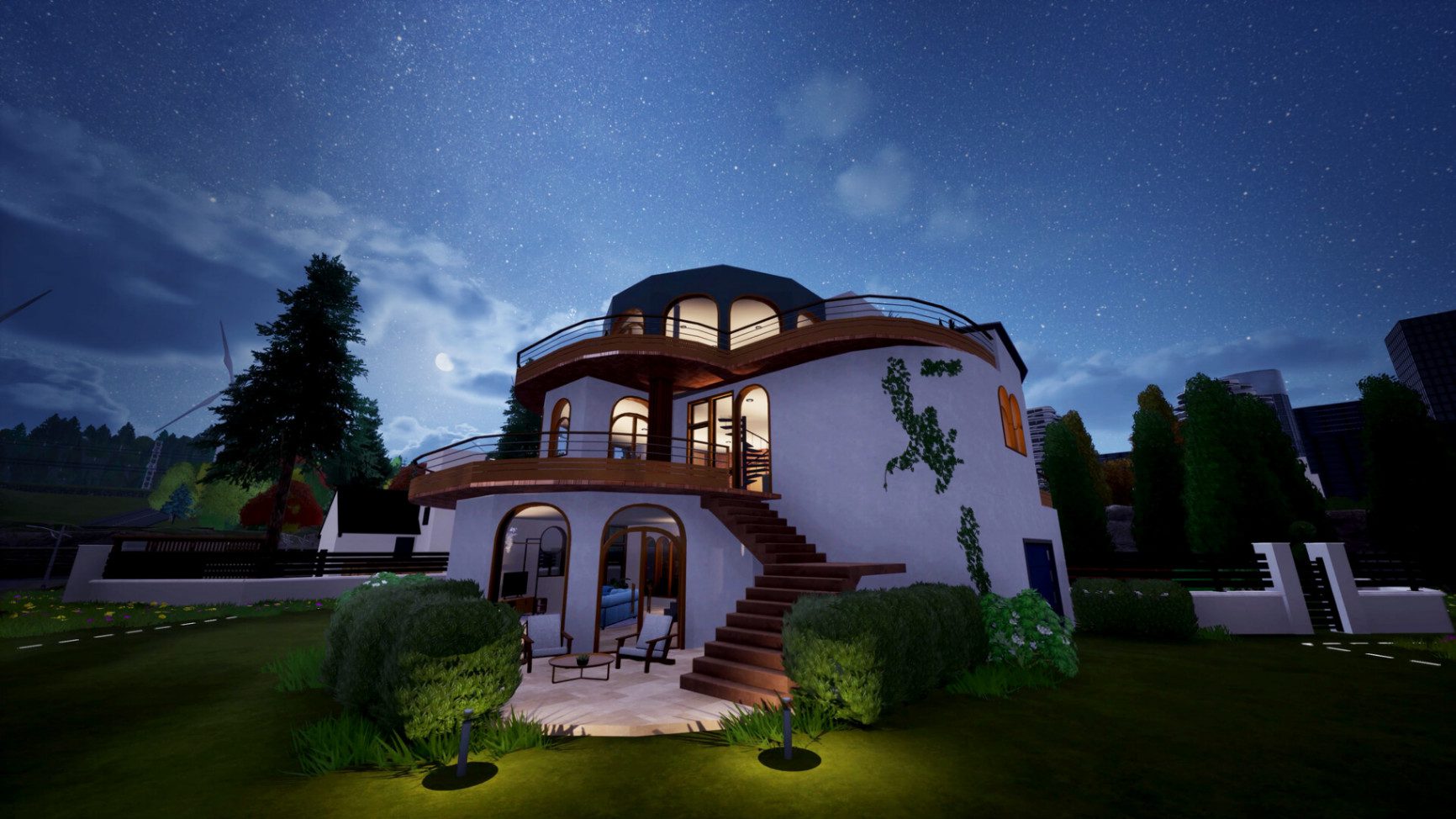
Visuals and Interface Design
A game about design needs to look good, and Architect Life presents a clean and functional aesthetic. The visuals are not photorealistic, but they are clear enough to let you focus on your creative tasks without distraction. The overall style is somewhat sterile but serves its purpose well, allowing the distinct materials and your structural choices to take center stage.
The interface design is where the game has both strengths and weaknesses. The developers aimed for an intuitive layout, but some control issues can hinder the experience, particularly when it comes to precision work. Let’s dig into the specifics of the graphics quality and the user interface.
Graphics Quality and Style
The graphics quality in Architect Life is best described as clean and serviceable. It won’t blow you away with cutting-edge effects, but it effectively communicates your design choices. Materials like wood, stone, and tile are rendered with enough fidelity to look distinct, helping you visualize the interior of your homes. The lighting system, while not advanced, adds a sense of warmth and allows you to see how the position of the sun might affect different rooms throughout the day.
One nice touch is the background of the design mode, which is styled like a drawing board to immerse you in the planning stage. The game also allows for detailed roof drawings and other structural elements that add to the feeling of creating a real blueprint. However, the focus is clearly on the architectural shell rather than hyper-realistic interior decor.
Here’s a quick breakdown of the graphical elements:
|
Aspect |
Description |
|---|---|
|
Material Textures |
Clear and distinct, making it easy to differentiate between wood, stone, metal, and tile. |
|
Lighting System |
Basic but functional, allowing you to place different lights and see their effect. |
|
Object Models |
Plentiful but can feel generic; focus is on quantity over high-detail quality. |
|
Environment |
Simple outdoor environments with options for adding vegetation and greenery. |
User Interface and Accessibility
The user interface is a mixed bag and one of the game’s most debated aspects. On one hand, the developers clearly tried to create intuitive tools that would be accessible to all players. For a simulation game on a console, the controller support is commendable, feeling more natural than you might expect. A whole trailer was even dedicated to showcasing how the console controls work.
However, the execution isn’t flawless. Many players, particularly on PC, have reported that the controls can feel clunky. Actions like snapping walls together or rotating objects at specific angles can be frustrating. The camera is another source of irritation; it can be janky, lacks an anchor point, and sometimes refuses to cooperate when you need a close-up view, causing objects to clip or disappear.
These accessibility issues don’t break the game, but they do introduce a layer of friction that can pull you out of the creative zone. You might find yourself fighting the controls to achieve your vision, which can lead to compromises in your final design. It’s a “fixer-upper” in this regard, with room for improvement through future patches.
Customization and Personalization Options
The heart of any house design game lies in its customization and personalization capabilities, and Architect Life offers a great deal in this area. The game gives you a blank canvas and a wide array of tools to make each project uniquely yours. From the architectural style to the smallest decorative detail, you are in control.
You can experiment with different layouts, materials, and styles to find what works best for your vision. The game encourages you to personalize every aspect of your creations, ensuring no two houses look exactly the same. Let’s explore how you can design your dream homes and customize them with various upgrades and decor.
Designing Dream Homes
The free mode is where Architect Life truly shines, allowing you to design your ultimate dream homes with an unlimited budget and access to all materials. This is the sandbox every aspiring architect wants, where the only limit is your imagination. Do you want a three-story house with a swimming pool on every floor? Go for it. The game gives you the freedom to experiment with wild and ambitious ideas.
This mode is perfect for honing your skills or simply having fun with limitless creative possibilities. You can tackle all sorts of contemporary home design projects or recreate classic architectural styles. Seeing your most ambitious creation come to life in a 3D render that you can walk through is an incredibly rewarding experience.
Here are just a few things you can do in free mode:
- Build sprawling multi-story mansions.
- Design cozy, rustic cabins in the woods.
- Experiment with open-concept layouts (though the game requires four walls per room, which can be a limitation).
- Create unconventional structures that defy normal architectural logic.
Upgrades, Decor, and Style Choices
When it comes to personalizing the interior, Architect Life offers a range of upgrades, decor, and style choices. You can select from various fittings for your kitchens and bathrooms, apply different coatings and paints to your walls, and furnish your rooms with a selection of objects. The game provides a basic catalog to get you started on making your house feel like a home.
However, this is also one of the game’s most significant weaknesses. The variety of interior items is relatively slim compared to similar games. Many players have expressed frustration that more exciting decor items—like those for a game room, home cinema, or sports room—are locked behind paid DLC, which was available on launch day. This can make interior decorating feel repetitive after a few builds.
Despite this, the focus of the game seems to be on the architectural structure itself rather than interior design. You still have a decent variety of facilities and items to work with, but those looking for an extensive decor catalog might be disappointed. The game prioritizes the blueprint and the build over the final furnishings.
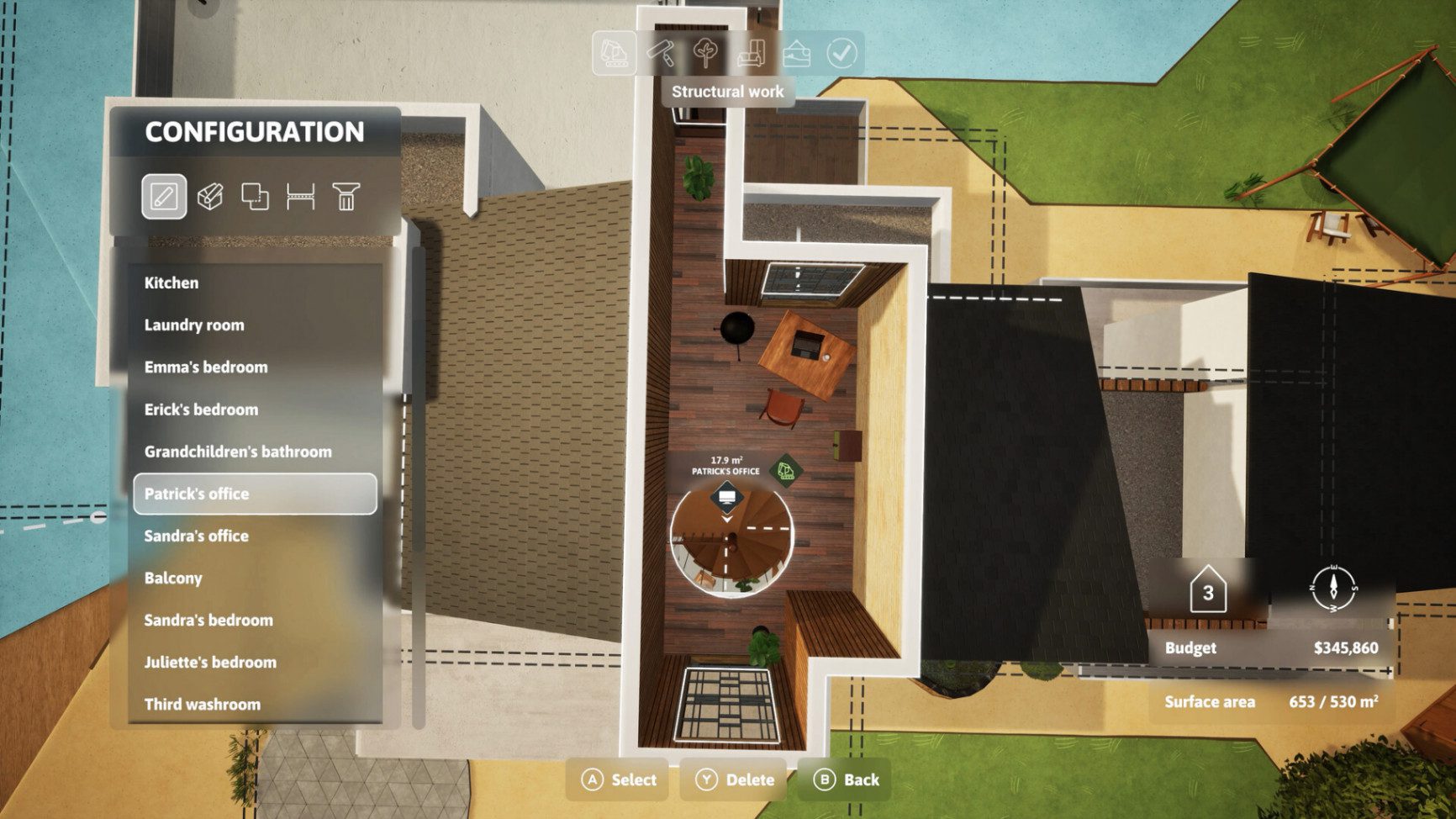
Value for Future Builders
Beyond being just a game, Architect Life holds real value for anyone with an interest in architecture or design. It serves as an accessible entry point into the principles of home construction, offering more than just entertainment. The educational aspects are woven directly into the gameplay, making learning feel natural and engaging.
For aspiring architects or hobbyist designers, this simulator is a fantastic digital sketchbook. It provides a space to test ideas, understand spatial relationships, and see how different design choices impact a structure’s functionality. We will now examine the educational benefits and the inspiration it can provide.
Educational Aspects of Home Design
The educational value of Architect Life is one of its quiet strengths. The game subtly teaches you the fundamentals of house design by making you manage the entire process. You learn about the importance of a solid foundation, the challenges of budget management, and the need to meet client specifications. It’s a hands-on lesson in project management and architectural principles.
The game encourages you to think about practical details you might otherwise overlook. For example, you’ll need to make precise angle measurements for walls and roofs, consider how to incorporate green energies, and plan the layout of utilities. These tasks provide a simplified but insightful look into the technical considerations that real architects face every day.
By simulating the start-to-finish process, the game helps you appreciate the complexity behind building a home. It’s not just about making something look good; it’s about making something that works. This practical approach provides a valuable learning experience that is both fun and informative.
Inspiration for Aspiring Architects
For students or anyone considering a career in architecture, Architect Life can be a tremendous source of inspiration. It provides a low-stakes environment to experiment and discover your personal design style. The game’s sandbox allows for complete creative freedom, letting you build things that might be impossible in the real world and pushing the boundaries of your imagination.
Aspiring architects can use the simulator to visualize concepts, test out different layouts, and experiment with new construction materials and styles without any cost or physical constraints. It’s a powerful tool for fostering creativity and getting a feel for the profession. As one reviewer from Finger Guns noted, it’s a great game for “a budding architect” who wants to explore their creativity.
Even with its flaws, the ability to quickly sketch out an idea in 3D and walk through it is invaluable. It can spark new ideas and provide the motivation to pursue architecture more seriously, making it more than just a game—it’s a digital muse.
Replayability and Community Engagement
A simulation game’s long-term appeal often depends on its replayability and the strength of its community. Architect Life has a strong foundation for longevity, thanks largely to its free mode. The core loop of designing and building is inherently repeatable and enjoyable, encouraging players to return and start new projects.
However, the potential for community engagement and the frequency of content updates will ultimately determine if the game maintains its player base over time. Let’s look at the game’s longevity and the social features that could help it grow.
Longevity and Content Updates
The longevity of Architect Life is primarily anchored by its free mode. The sheer joy of creating something from scratch with no limitations offers endless hours of gameplay. Many players report sinking five hours into a single session without even realizing it, testament to the game’s relaxing and absorbing nature. You can always start a new project, try a different style, or challenge yourself with a complex build.
However, there is a risk of the experience becoming repetitive. The limited catalog of interior items means that after a few houses, your designs might start to feel similar. The game’s long-term success will likely depend on the developer’s commitment to releasing content updates. As noted by Thumb Culture, “If they listen to their audience and implement some small changes, I honestly think this will be a fantastic game.”
Adding new furniture packs, building materials, and architectural styles would provide fresh new ways for players to express their creativity. Regular updates could transform Architect Life from a good game into a great one that players return to for years.
Competitions & Social Features
Currently, Architect Life is primarily a solo experience. The compiled information does not indicate the presence of built-in competitions or extensive social features. This represents a significant area of potential growth for the game. The ability for players to share their creations with the community would add a whole new dimension to the experience.
Imagine design competitions where players are challenged to build the best modern home or the most eco-friendly cabin. A feature allowing players to upload their dream houses to an online gallery for others to download and explore would foster a vibrant and creative community. This would not only showcase the incredible things players can build but also provide endless inspiration for others.
While these features are not yet in the game, they are common in the simulation genre and would be a natural next step for Architect Life. Building a strong community around sharing and celebrating player creations could significantly boost the game’s appeal and ensure its long-term success.

Conclusion
In conclusion, “Architect Life: A House Design Simulator” offers an engaging and immersive experience for aspiring architects and gamers alike. With its unique blend of realism, creativity, and educational value, players can unleash their inner designer. The game encourages innovation through its customizable features and community engagement, making it not just a game, but a platform for future builders to explore their potential. As you dive into this exciting world of home design, remember that every detail matters and contributes to the larger picture. Ready to start designing your dream homes?
Frequently Asked Questions
Is Architect Life suitable for beginners?
Yes, Architect Life is suitable for beginners. The career mode eases you into the mechanics by starting with simple projects. While there’s a learning curve, the intuitive tools and ergonomic design make the house design simulator accessible, allowing anyone to explore their creative possibilities without feeling overwhelmed.
Can you design houses based on real-world styles?
Absolutely. The house design simulator gives you tools for precise dimension and structure extensions, allowing you to recreate various real-world styles. You can design everything from contemporary mansions to classic bungalows, complete with detailed roof drawings and accurate layouts, making your architectural visions a reality.
What platforms is Architect Life available on?
Architect Life: A House Design Simulator is available on a wide range of platforms. You can play it on PC, PlayStation 5, Xbox Series X|S, and Nintendo Switch. The game offers both keyboard-and-mouse support on PC and dedicated console controls for a comfortable experience on all systems.
